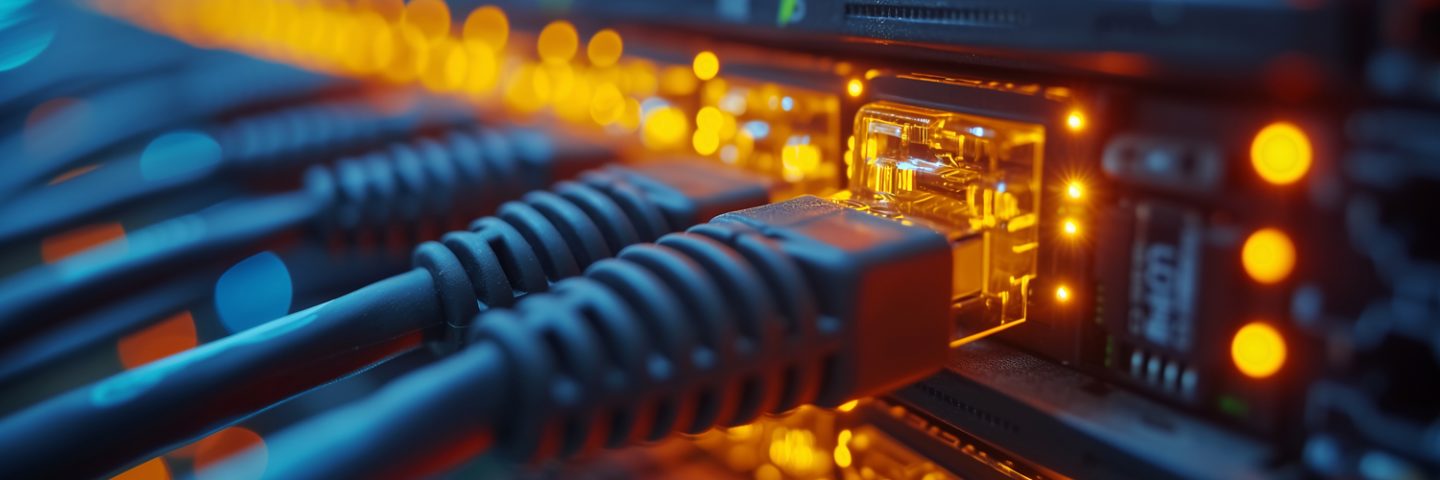
People who surf the Internet or stream series at home are increasingly using fiber optics. The data is transmitted as light pulses via optical fibers – in more and more households, even to the router in the home. The situation is different in production facilities: the distances are shorter and the amount of data to be transmitted is often lower. Industrial Ethernet cables dominate here, transmitting data signals as electrical impulses via shielded copper wires. However, transmission rate requirements are constantly increasing, which is why fiber optic cables are increasingly being used in production facilities. “One is not fundamentally better or worse than the other,” emphasizes Kay Niemann, Product Manager for fiber optic cables at LAPP. “It always depends on the individual application.”
Decision-making aid for every application
The following six characteristics help to determine the right cable technology for the specific application and to make the right decision between fiber optic cables and electrical data cables.
- Transmission rate
Light is the preferred medium when large amounts of data need to be transmitted. In the networking of office buildings or production facilities, fiber optic cables achieve transmission rates of up to 40 gigabits per second. The current world record with a cable consisting of 19 fibers is even one petabit per second – equivalent to one million gigabits per second. Despite this high performance, planners should check whether these speeds are actually required. Even in optical quality assurance, where several high-resolution video streams are transmitted simultaneously via a single cable, a few gigabits per second are usually sufficient. At the same time, copper-based Ethernet technology is continuing to develop: cables that comply with the Cat.7 standard achieve 10 Gbit/s and Cat.8 cables even reach 40 Gbit/s. This makes them just as powerful as fiber optic cables over short distances. “And development is not over yet,” promises Christian Illenseer, Product Manager for Industrial Communication at LAPP. - Distance
The biggest difference between the two technologies is probably the distance. The maximum length of an Ethernet cable is 100 meters, as electrical signals are attenuated too much over longer distances and data loss can occur. This is sufficient for many applications in industrial environments, such as communication between machines. However, when it comes to high transmission rates, as with Cat.8 cables, these reach their limits at a length of 40 meters. So when longer distances need to be bridged and high data transmission rates are required, for example to network large chemical plants or a campus with several buildings, fiber optic cables are the only option. Depending on the design and data rate, they can seamlessly bridge distances from 500 meters to 40 kilometers. Even greater distances can be achieved with repeaters that amplify the light signal. - Electromagnetic compatibility
Light is not affected by electromagnetic fields and does not emit any interference signals itself—a significant advantage for fiber optics in EMC-critical applications. They offer a safe and reliable solution in the vicinity of transformers, high-voltage equipment, or machines that generate strong interference pulses. Ethernet cables are also suitable for such environments, but require careful installation to ensure optimal shielding. - Power supply
In industrial environments, some end devices, such as cameras or access points, require their own power supply. However, an additional cable increases installation costs and the risk of errors – and battery solutions are more suitable for small devices with minimal energy consumption, such as sensors. Power over Ethernet (PoE) is a proven alternative: The Ethernet cable not only transmits data, but also electrical power with up to 71 watts of power on four-pair cables. This covers the needs of most applications in manufacturing. Fiber optic cables, on the other hand, do not offer this option and always require a separate power cable. - Moving applications
Both fiber optic cables and copper cables exhibit high mechanical resilience when permanently installed. Both technologies are also suitable for moving applications, provided that the bending radii are observed and the strain reliefs are taken into account. The widespread assumption that fiber optic cables are prone to breakage is therefore unfounded. Whether the fiber optic cable is made of plastic or glass is of secondary importance—both materials are flexible and suitable for moving applications. - Processing
Another common misconception is that fiber optic cables are more complex to install than copper cables. In fact, light can only travel through the fiber without loss if the transition in the connector is precisely aligned. Even the smallest air gap can scatter the light and impair the transmission quality. The connection therefore requires the highest precision. With its innovative EPIC@ DATA FIBER FAST CONNECT (FFC) plug connectors, LAPP offers a pre-assembled solution that significantly simplifies the connection of fiber optic cables.
A short piece of fiber is already located inside these pre-assembled connectors. After cutting the fiber to the desired length, installers can simply insert the cut fiber into the opening and push it against the prepared piece of fiber in the connector. Since the surface is rarely completely smooth after cutting, a small gap is created between the two fiber ends. To prevent light loss, a special material is attached to the fiber end in the connector. It sits firmly on the prepared fiber piece in the connector and ensures secure, loss-free light transmission.
The use of FFC connectors offers users maximum flexibility. Installation is straightforward and requires neither special expertise nor a separate splicing device. This saves time and reduces costs. Connectors and cables can be kept in stock so that new connections with fiber optic cables can be quickly installed or easily replaced as needed—for example, during maintenance work or after a failure. This ensures that the system remains operational even in exceptional situations.


Cables follow the active components
The decision between fiber optic and copper-based cables cannot be made across the board, as both technologies offer specific advantages depending on the area of application. In any case, the architecture of the network is not primarily determined by the properties of the cables, explains Christian Illenseer: “Planning always starts with the active components – i.e., the devices that are to be networked. The selection of the appropriate cables then follows this requirement.“ LAPP supports this process by helping to select the right products to suit individual requirements, whether in terms of oil resistance or flexibility.
A strict either/or decision is rarely necessary, emphasizes Kay Niemann: ”Gateways and switches now have both optical and electrical connections. This allows the advantages to be combined: optical fiber cables for long distances in the backbone and electrical copper cables for communication with the machines and devices.“ ”And if you still have questions, we at LAPP are happy to advise you,” adds Christian Illenseer.
